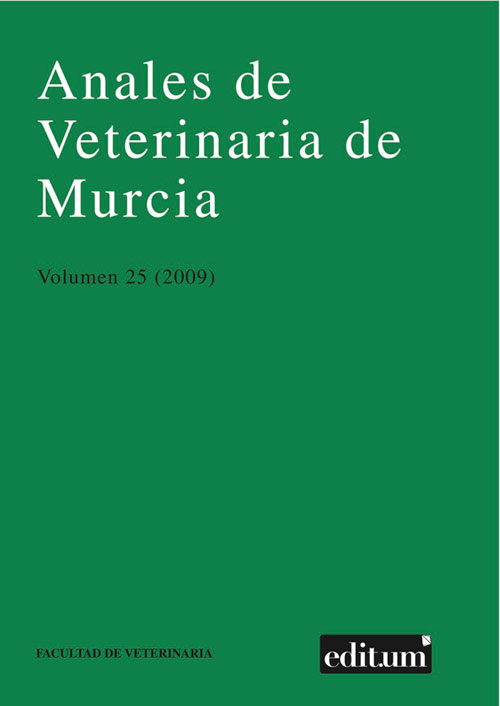Dry matter yield and quality of some mediterranean annual legumes
Abstract
The aim of this study was to evaluate the forage yield and quality of local varieties of Bard vetch (Vicia monanthos), Grass pea (Lathyrus sativus), Field pea (Pisum sativum), Common vetch (Vicia sativa), Narbon vetch (Vicia narbonensis) and Bitter vetch (Vicia ervilia). The trial was carried out in three locations over three consecutive years of harvest. Quantitative (kg DM/ha) and qualitative variables (dry mater (%DM), crude protein (%PB), acid detergent fi ber (%FAD), neutral detergent fi ber (%FND) and metabolizable energy (Mcal) were determined for April, June and July. Highest yield in the April sampling was Bitter vetch (1.127 kg DM/ ha, 20,98 %PB and 2,327 Mcal/kg DM), followed by Common vetch (924 kg DM/ha, 23,01 %PB 2,498 Mcal/ kg DM). In the June, the highest yield species were Common vetch (1.895 kg DM/ha, 20,01 %PB and 2,247 Mcal/kg DM) and Bitter vetch (1.802 kg DM/ha, 16,12 %PB and 2,033 Mcal/kg DM). For July, the highest yield was for Bitter vetch (2.880 kg DM/ha, 13,98 %PB and 1.906 Mcal/kg DM), followed by Common vetch (2,777 kg DM/ha, 14.97 %PB and 2,043 Mcal/kg DM). Our results sown that, under the conditions of our study, Common vetch and Bitter vetch were the spices of greater interest as fodder for ruminants from the end of the vegetative period to the crop attained full ripeness.Downloads
Creative Commons Attribution 4.0
The works published in this journal are subject to the following terms:
1. The Publications Service of the University of Murcia (the publisher) retains the property rights (copyright) of published works, and encourages and enables the reuse of the same under the license specified in paragraph 2.
© Servicio de Publicaciones, Universidad de Murcia, 2019
2. The works are published in the online edition of the journal under a Creative Commons Attribution-NonCommercial 4.0 (legal text). You can copy, use, distribute, transmit and publicly display, provided that: i) you cite the author and the original source of publication (journal, editorial and URL of the work), ii) are not used for commercial purposes, iii ) mentions the existence and specifications of this license.

This work is licensed under a Creative Commons Attribution-NonCommercial-NoDerivatives 4.0 International License.
3. Conditions of self-archiving. Is allowed and encouraged the authors to disseminate electronically pre-print versions (version before being evaluated and sent to the journal) and / or post-print (version reviewed and accepted for publication) of their works before publication, as it encourages its earliest circulation and diffusion and thus a possible increase in its citation and scope between the academic community. RoMEO Color: Green.




